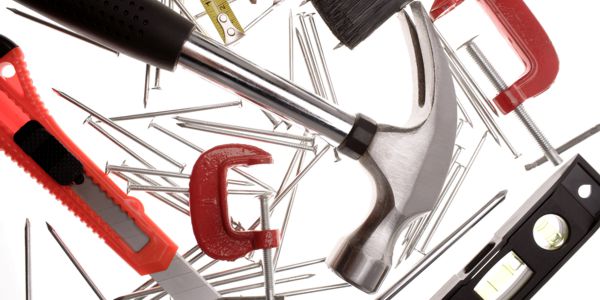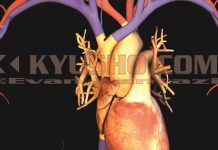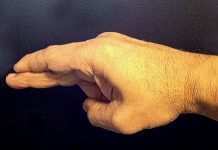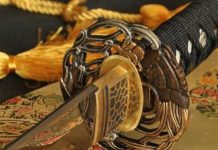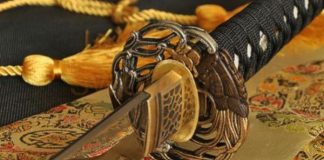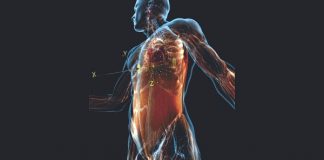Tools, Targets or the Technique: Anatomical Targeting vs Techniques
Today we can see a divergence from the more ancient practices as the mainstream martial artist values techniques as the most valued aspect of their training. But this does not appear in line with most ancient texts, it came into the mainstream more with Wrestling, Jujutsu and Judo as they turned first to sport. This in turn also affected the art of Karate as it was more interesting to people to always learn new techniques that they believe made them better.
But ask yourself this question honestly; is a great knowledge of many techniques (all dependent on set situation or specific body position) superior to the ancient method of anatomical targeting or the long arduous process of forging tools (conditioning of knuckles, finger tips, legs, etc.) into hardened weapons?
Many will argue that the old forms (Kata) are a series of techniques for certain response to attacks, but this theory is flawed. It lacks the spontaneity of real combat, it lacks the probability of loss of fine motor skill or the ability to link more complex actions together, it lacks the universal applicability for all trainees. It also places you in a secondary position or defensive rather than a more proactive or offensive capacity.
- Spontaneity: Real combative or attack response can never be planned for or actions expected. There are infinite possibilities that are shaped by individual aggression levels and ethical or moral limitations or lack thereof, (does the attacker have the ability to break an arm,gouge an eye, take a life, etc.). Other infinite possibilities lie in the environment that the attacks take place, the weather, time (of day and the distortion of time and timing under real stress, fear and maybe even panic), situation (clothing, health, age,etc.). Yes, most prepare in a sterile environment, conditions and understanding of safe control, but this is a dream world where everything is controlled, but realistically the real world will be vastly different. All of our controlled actions and reactions may help strengthen the body and give it options, but it is never going to be able to handle the variables that real attack will.
- Physical Attributes: Yes many physical skills you believe to possess (and do in the perfect environment), will be unusable when the adrenaline surge strips you of variable sensory, mental and muscle comprehension, processing or control. It will also spark an escalating or snowballing affect on the individual as more and more personal control is lost. The first skill that will evaporate is complex series of actions (exactly what stylistic techniques are), if you were counting on these, then you will be in a totally foreign position, this will lead to further stress, adrenaline and physical shutdown. Next is sensory, your sight, hearing, smell regresses so if you need light, sight or audible queue (as practiced in the sterile training hall), then you will be deaf and blind (this can also be the bodies preservation method as you you are being beaten senseless or receive traumatic injury).
- Applicability: All people are different and can accomplish only to their physical, mental and spiritual (not religion, but capacity of inclination or nature; fortitude) limitations. What techniques or sets of moves works for one, will not work for all and someone else actions that do not coincide with yours are a sure path to failure under severe stress or demand. Even if trained, it is still under set rule or action/reaction and not of spontaneity. This is a common misunderstanding by most Martial Art instructors as they show techniques that they can accomplish after years of continuous, repetitive training and try to mold the individual to their standard not the individuals capacity.
- Modalities: Or the an attribute or circumstance that denotes mode or manner; are you reactive or proactive. This is a critical factor in the outcome of a confrontation and what predominantly determines the outcome. By nature, technique is based on an opponents attack, which has the practitioner of this methodology one step behind the attacker. Instructors using technique teach how to REACT to the attack, which instills this quality or modality in the individual over time, regardless of aptitude of that individual for the technique and the differential in attackers size, age, skill and or strength. Being target oriented you will respond proactively and spontaneously without the burden of conformity, yet this can only be accomplished with the right tools.
Back to the ancients….
They wrote about their training’s but it is largely ignored as it was not easy and in some cases, not publicly acceptable in more modern times (although there are always rebels that will do it anyway). They did not spend a lot of time on techniques or combined actions against specific attack, no they had anatomical targets as their primary topic. Next came tactics as to how to access them and then the arduous training of weapons. Look at Musahsi, Tsun Zu, Fujita (“the last”…) and others before. Tactics and weapons have changed in the modern world from those in older days (strategies still maintain their worth however) but the anatomical structures are the single constant that we must never loose sight of.
IN FACT THE WRITINGS OR SCROLLS FROM SURVIVING CHARTS FOR THESE STYLES, ARE BASED PRIMARILY ON THE ANATOMY, NOT THE TECHNIQUES OF THE STYLE.
- Seigo-Ryu
- Seishin-Ryu
- Araki-Ryu
- Takenouchi-Ryu
- Iga-Ryu
- Seigo-Ryu
- Kajiwara-Ryu
- Butsutai-Ryu
- Shinshin style’
- Ka shima shin po style
- Sekiguchi shinshin style
- Shin tou riku gou style
- Kou dou kan style (judo)
- Shi shin style
- Yagyu heart style
- Shinto style
- Tenshin Masaki style
- Syoulinzi style
- There are 365 points in the human body, and 360 points of them are used for cauterization, 26 attack points and 24 closing points are used in Syournzi style
- Vital organ points showed in Bubishi prohibited points Sumo
- Shishintakyukan
- …even Western Boxing
So as we look at old writings or original documents and scrolls, we will take the same Parameters:
- Spontaneity: Real combative or attack response can never be planned for or actions expected. There will always be an open target access no matter what position both persons are in.
- Physical Attributes: The only limitation is in your spontaneous recognition of targets as they avail themselves.
- Applicability: A person can use whatever tool they find natural (as opposed to working years to mimic the unnatural move of another) to apply making this a personal art or style that can be learned faster and in accordance with their innate abilities.
- Modalities: It teaches a proactive solution as opposed to a defensive method which will be far more efficient and effective.
Now the task is to train the weapons or tools we will use to enhance our affect… these were rarely written about in the old styles, but trained far more ardently and universally in the past. This development should be 30% of the martial artists training with 40% to target acquisition. The remaining 30% to other training like forms that train the tools deployment (not technique), tactics and strategies, this is what was stylistic… how they arranged the tool deployment. This is stated as all styles share similar tool deployment, just in varying patterns (Kata, Forms, Kuens, etc.) this is what defines a style.
Kyusho is not a style, do not make it one.
© Evan Pantazi 2014
www.kyusho.com

